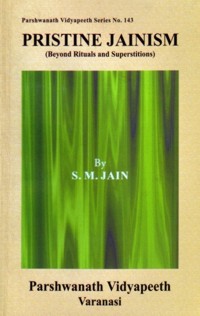In the next chapter while discussing cyclic changes it would be observed that the role of Kalpavrikshas, their protection and destruction by people is central in ascending and descending, progressive or regressive (retrogratory) processes. It is therefore, important to know more about these Kalpavrikshas (Forests) as mentioned in Jain literature. Both mythological and canonical literature of almost all ancient religions of India are replete with miraculous benevolence of Kalpavrikshas. Generally with the exception of Jain literature, the term Kalpavriksha is for a particular tree namely Adansonia digitata (the bread tree). What actually was nomenclature for good polyculture forests comprising variety of trees, yielding various products catering, satisfying needs of people, became, through passage of time, with superstitious superlatives, attribute for this particular tree species, being worshipped as supernatural one, believed superstitiously as bestowing favours, fulfilling requested wants of worshippers. This is fallacious and a travesty of human mind. It so happens that someone starts worshipping any object on heresy or under influence of vested interest, pseudo saint or else and gets benefitted because of fructification of past or present good deeds (Karmas), he starts propagating, advocating which spreads and gradually gets acceptance from larger numbers. The fact is that all worshippers or devotees do not get their wishes fulfilled. Only those whose Karmas fructify, get benefitted. But even if ten per cent benefit the multiplier effect is overwhelming. Everybody knows that all devotees going to Vaishnodevi, Tirupati or elsewhere are not benefitted but instead many suffer losses and even meet death in accidents. Jainism in principle does not subscribe to any sort of superstition but unfortunately more and more gullible Jains are succumbing to false temptations. This is because of ignorance of even the principal tenets of Jainism. Ignorant people are generally lazy (Pramadi) and want easy gains without efforts and are therefore mislead by mischievous manipulators, cheats and even pseudo saints. It needs arduous efforts to do good deeds, reduce wants and follow righteous path to earn good luck (Karma). People shirk it and fall prey and suffer.
In Jain literature kalpavriksha is not one particular tree but all tree species grouped in ten broad categories. In Tilloypannati by Yati Vrishabhacharya there is mention of ten types of kalpavrikshas (trees);
पाणंग-तरियंगा भूसण-वत्थंग-भोयणांअम य
आलय-दीविय-भायण-माला-तेजंग आदि कल्पतरु॥346॥
[ Tiloypannati, 2nd Part 4th Chapter ]
The ten types are Panang (yielding liquid products for drinking), Turyang (giving wood and other material for making musical instruments), Bhushnang (giving material flowers etc. for ornamentation), Vastrang (giving fibres, flosses, dyes, chemicals, gums etc. for clothing), Bhojnang (giving edible fruits, seeds, nuts, leaves, flowers etc. for food), Alayang (giving timber etc. for construction of houses), Dipang (giving material used for fire, lighting), Bhajanang (from which material for utensils is available), Malang (giving decorative flowers etc.), Tejang which protect from harmful radiations of sun).
It is significant to note the word 'etc' (आदि) i.e. there are other types also. Though forests (trees) have been destroyed over vast areas and many species are even extinct, yet the remnant existing forests have types of trees mentioned above which if preserved, developed and propagated, the era of Kalpavrikshas, the Sukhma (Happy), and even Sukhma - Sukhma (Happy - Happy) State can be achieved, the descending cycle can be stopped and reversed to ascending (progressive) order. Time can be arrested and sustainable stable conditions established as cited in the case of some areas mentioned in next chapter.
 S.M. Jain
S.M. Jain
